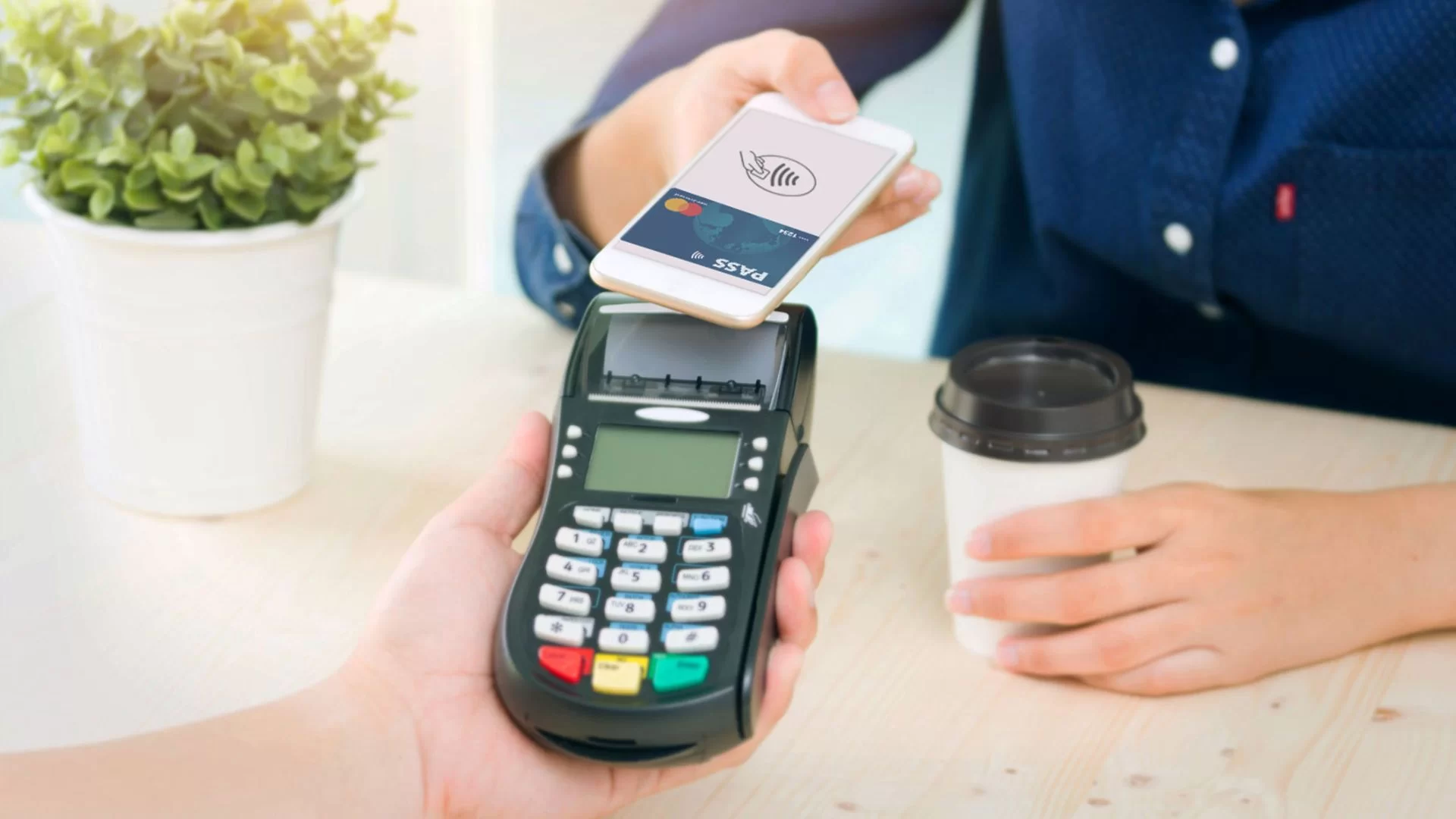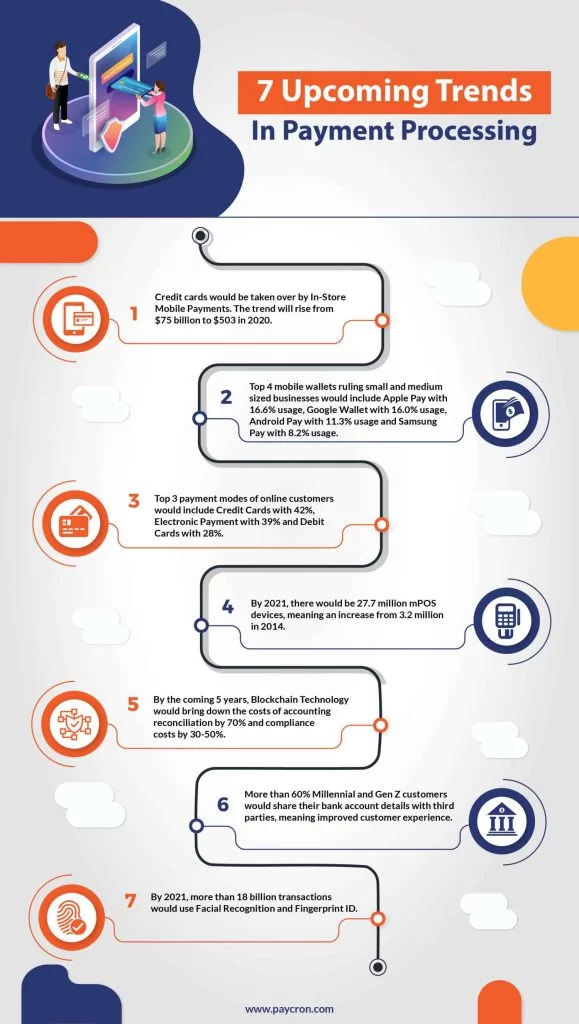
| November 28th, 2018 |
7 Trends Foreseen For Payment Processing!
Security technology and the ever-changing habits of customers have made the payment processing industry evolve more quickly than ever. Evolving millennial and Gen Y populations have increased the fame of wallets and mobile payments with biometric authentication. Steal a few minutes and go through this infographic to discover the future of payment processing. Do check it because you got to prepare yourself for the coming time.
Below, we’ve outlined 7 trends foreseen for payment processing and included an infographic to help explain them –
These trends are just a few of the exciting developments in payment processing that we are likely to see in the future. With these advances, customers can look forward to faster and more secure payments in the years to come.

1. Credit cards would be taken over by In-Store Mobile Payments —
- Rapid growth: Mobile payment adoption is rising significantly, with a projected increase from $75 billion to $503 billion in 2020.
- Convenience factor: Users prefer mobile payments due to speed, ease of use, and integration with smartphones.
- Merchant adoption: Retailers are increasingly upgrading POS systems to support mobile payment technologies.
- Security features: Mobile payments use tokenization and encryption, making them more secure than traditional credit card transactions.
- Global expansion: Countries like China, India, and the U.S. are leading the way in adopting mobile payment systems.
2. Top 4 mobile wallets ruling small and medium-sized businesses —
- Apple Pay (16.6%): Known for its seamless integration with Apple devices and enhanced security features.
- Google Wallet (16.0%): Offers cross-platform compatibility and user-friendly features for Android users.
- Android Pay (11.3%): Integrated deeply with Google’s ecosystem, making it popular for Android users globally.
- Samsung Pay (8.2%): Unique technology allowing compatibility with both NFC and magnetic stripe card readers.
- SMB adoption: Small businesses favor mobile wallets for faster transactions and lower processing costs.
3. Top 3 payment modes of online customers —
- Credit Cards (42%): Most widely used for online payments due to global acceptance and reward programs.
- Electronic Payment (39%): Includes methods like PayPal, Venmo, and bank transfers, preferred for convenience.
- Debit Cards (28%): Popular for users who want direct access to their bank accounts without credit dependency.
- Multi-channel adoption: Many consumers use a mix of these methods based on the platform and context.
- E-commerce growth: The rapid expansion of online shopping has driven demand for diverse payment options.
4. By 2021, there would be 27.7 million mPOS devices —
- Growth from 3.2 million in 2014: Reflecting massive adoption of mobile Point-of-Sale (mPOS) systems globally.
- Portable solutions: mPOS devices provide flexibility, enabling merchants to accept payments anywhere.
- Cost-effective: Affordable for small businesses compared to traditional POS systems.
- Contactless trend: Many mPOS systems now support NFC, making contactless payments possible.
- Industries adopting mPOS: Commonly used in food trucks, pop-up shops, and service-based businesses.
5. Blockchain Technology to reduce accounting and compliance costs —
- Accounting reconciliation: Blockchain eliminates manual processes, reducing errors and improving efficiency by 70%.
- Transparency: Immutable records provide clear audit trails for financial transactions.
- Cost savings: Businesses save 30–50% on compliance costs due to automated smart contracts.
- Enhanced security: Transactions are encrypted and decentralized, preventing fraud and data breaches.
- Financial inclusion: Blockchain allows businesses to reach unbanked populations with low-cost payment solutions.
6. More than 60% Millennial and Gen Z customers to share bank details with third parties —
- Open banking: APIs enable secure sharing of customer data for better financial products.
- Personalized services: Sharing data improves customer experience with tailored recommendations.
- Trust in technology: Younger generations are more comfortable sharing data with reliable third parties.
- Rise of fintechs: Companies like Plaid and Yodlee facilitate safe data-sharing practices.
- Regulatory oversight: Policies like GDPR and PSD2 ensure customer data is protected.
7. By 2021, more than 18 billion transactions to use Facial Recognition and Fingerprint ID —
- Biometric security: Authentication methods like facial recognition and fingerprints reduce fraud.
- Faster checkout: Eliminates the need for PINs or passwords, speeding up transactions.
- Growing adoption: Integrated into smartphones, ATMs, and payment terminals.
- Customer trust: Users feel secure knowing their identity is required for every transaction.
- Healthcare and travel: Sectors adopting biometrics for both payments and identity verification.